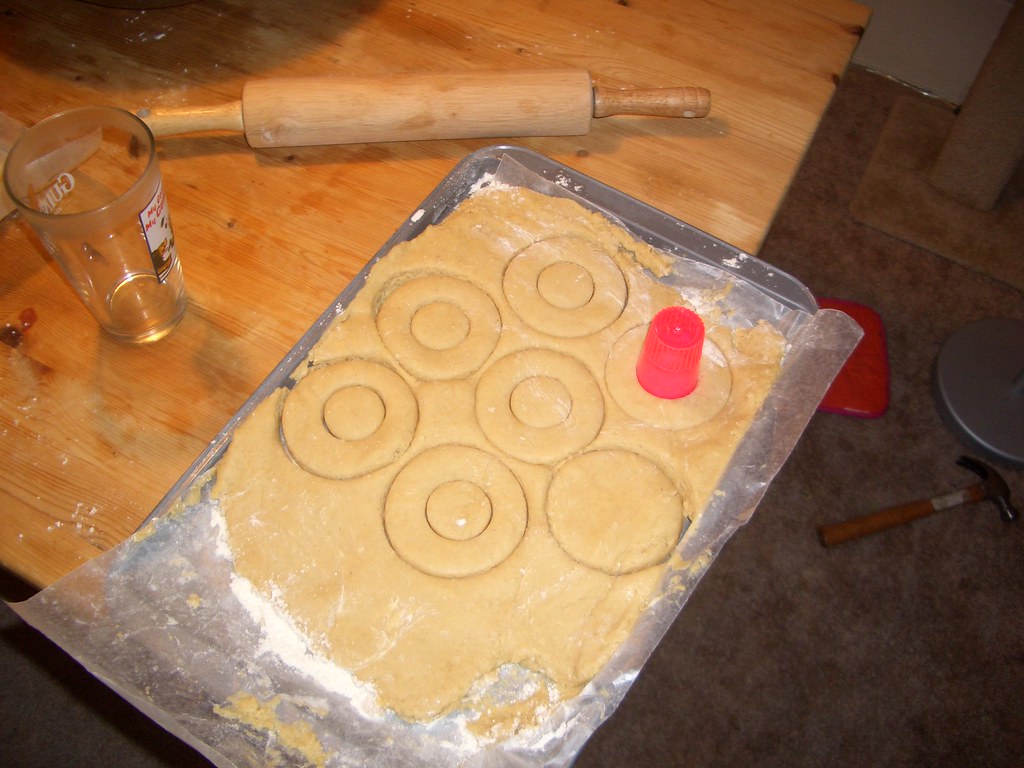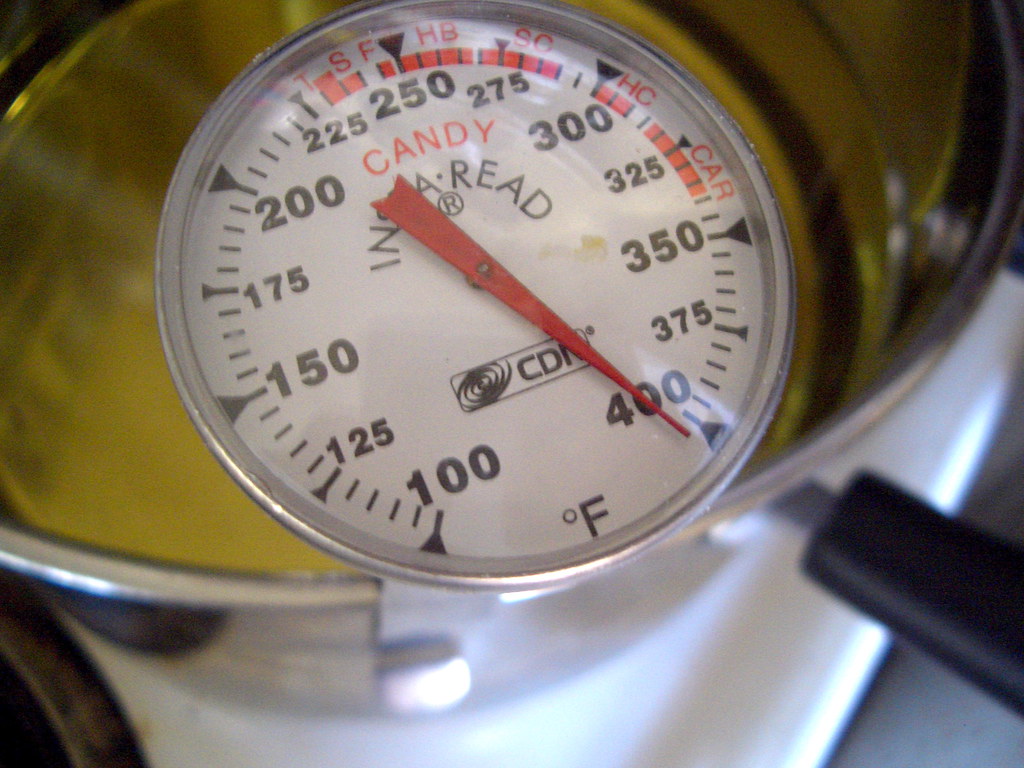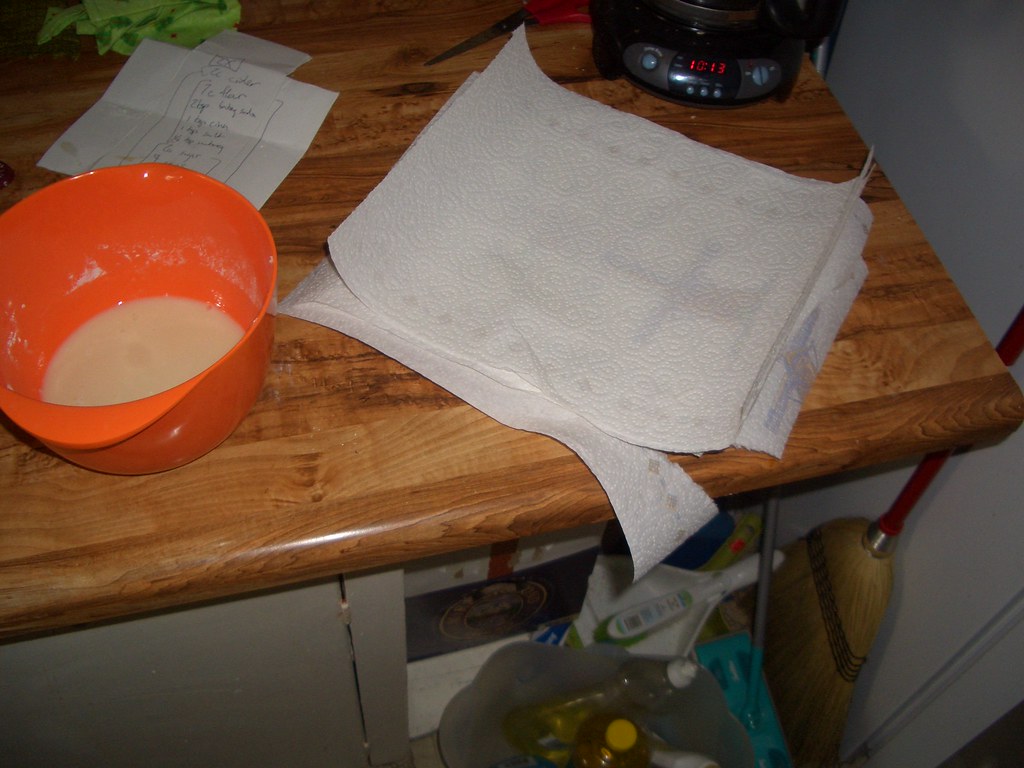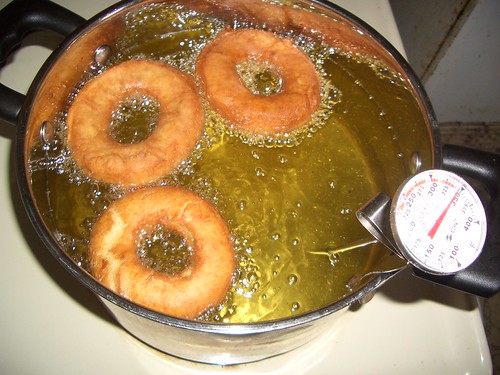Cider Donuts! (Or, Autumn's Pleasure Torus)
I made donuts! I made the dough last night and fried three dozen of them this morning. I took them to work and was the Monday Morning Office Hero!
Making donuts, like making candy, is something I've wanted to do ever since I came across the recipe in James Beard's American Cookery. I was planning to make them when I got my deep fryer but never got around to it, probably because of the confusion about which type of donuts to make. Donuts are either yeast-risen (like Krispy Kremes) or quick bread-style (like Hostess Donettes). The yeast-risen kind always seemed more deluxe but also more difficult. The decision was enough to make me forget about them.
Then, just last week, Kottke linked to an article about cider donuts with a recipe. They were the cake kind, and promised to be excellent. Here's how you make them:
First, mix your ingredients. The steel bowl has flour, nutmeg, cinnamon, baking soda and salt. The orange bowl has sugar, butter, eggs, buttermilk, and reduced cider. For the cider, I got the kind that's murky and has to be refrigerated. You leave it on medium heat for 30 minutes until 3/4 of the volume evaporates, leaving a kind of cider syrup. (I have some left over buttermilk that I plan on making into pancakes and serving with more heavily reduced cider syrup.)
Then you flatten it with your hands, put it in the freezer for 30 minutes, and cut donuts. Like the frying, this isn't really an exact science. You basically want to keep the dough cold because it has enough liquid to get sticky if left to itself. I wound up taking dough in and out of the freezer to keep it cold enough. I also doubled the recipe, so it was a bit trickier to manage than a single batch.
I also realized i didn't have biscuit cutters, but a pint glass and a plastic shot glass work beautifully.
Then you want to heat a big pot of vegetable oil. The thing about this is that the oil will heat quickly and silently. You just look over and it's way too hot. So you turn the heat off and it takes forever to dissipate the extra heat.
This photo was taken six years after the previous one. See what I mean?
Then, finally when the dough is at 350°F, it's time to get ready. What you see here is a bowl of cider glaze (powdered sugar and cider) and a plate with a lot of paper towels. Now it's time to do cook the donuts.
They sink, bubble, and rise to the surface.
After 60 seconds it's time to turn them with a spatula and cook the other side. Controlling the temperature of the oil is difficult because of the initial overshoot and the cold dough. It's also not critical. They all taste good.
Here they are in video.
Delicious! I realized after they were all gone that I only took a picture of the donut holes. You get the idea. One thing to know about donut holes is that they don't really turn like regular donuts. You kind of just have to keep rolling them.
Some of you out there may be wondering if donuts are a good thing to be eating, what with heart disease and diabetes and all. Look at it this way, one of these donuts has about a half teaspoon of butter and two teaspoons of sugar (not including optional glaze). That's like a slice of lightly buttered toast and a fifth of a can of coke. It's also fried in vegetable (canola) oil, probably about another half a teaspoon of which stays in the crust of the donut and provides omega-3 fatty acids without hardly any extra saturated fat.
But for me, doing the math is silly. Compare it with a store bought cake donut at Safeway, which if you ask to know what's in them they'll go find a thousand page binder from the corporate office and show you on page 912. The store bought donut is roughly the same in terms of nutrition metrics, but it's made with partially hydrogenated oils, weird preservatives, artificial flavors, corn syrup and weird coagulates. It's also pre-made and frozen at the Safeway distribution warehouse and shipped via gas-guzzling refrigerated truck. But most importantly, if you really stop to think "I know this is supposed to taste good, but how does it actually taste?" you'll realize it's like biting into a thick homogeneous paste that doesn't actually taste like anything.
So get a few dollars of simple ingredients and try it some time! Here's the recipe.
No comments:
Post a Comment